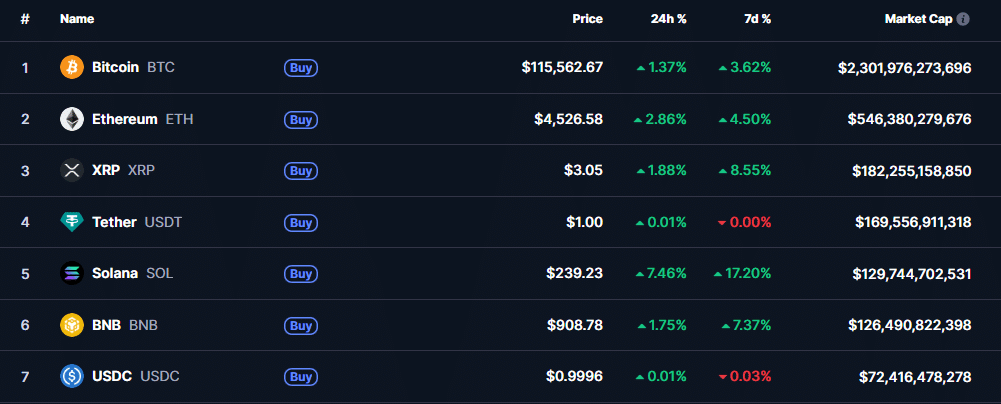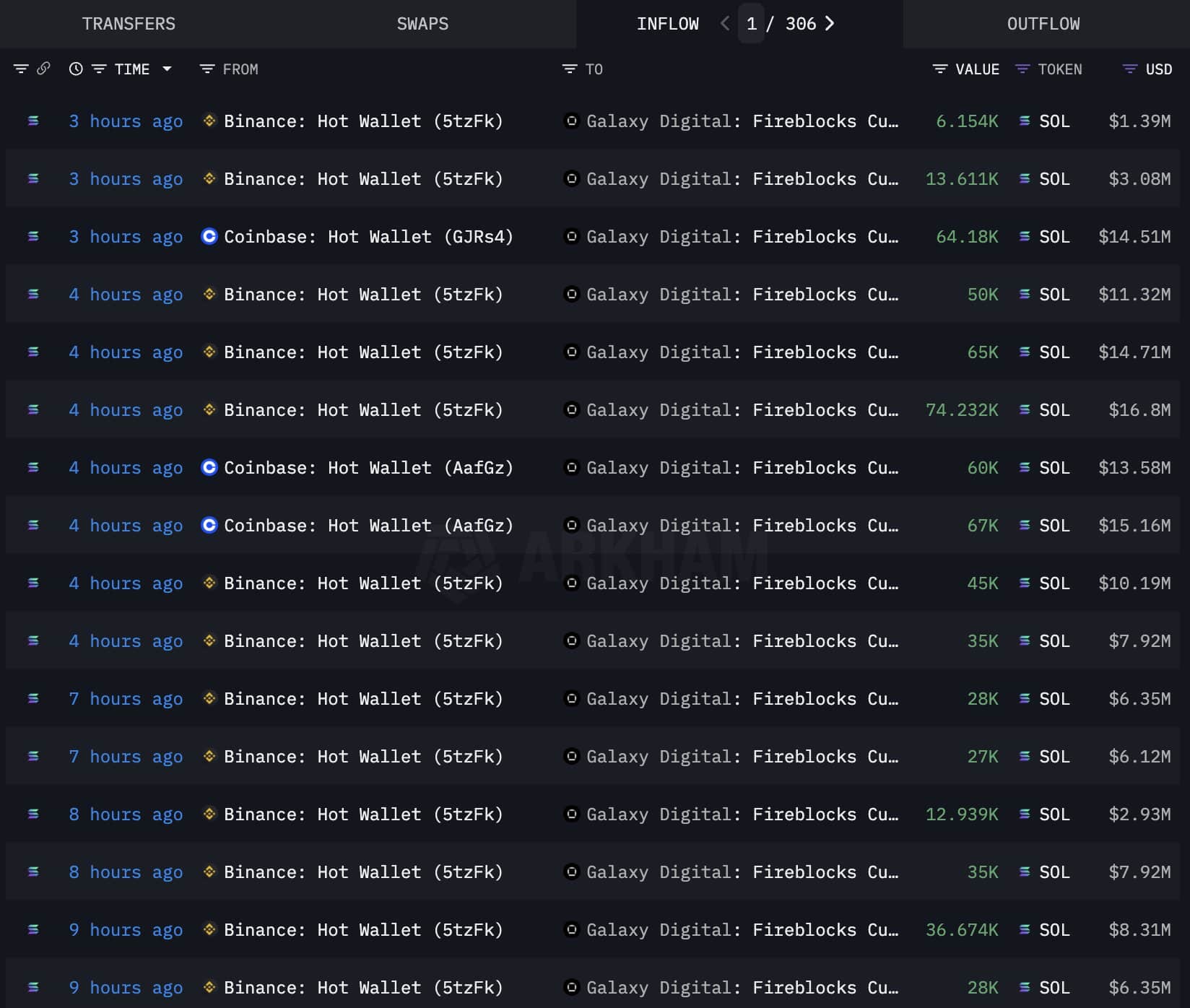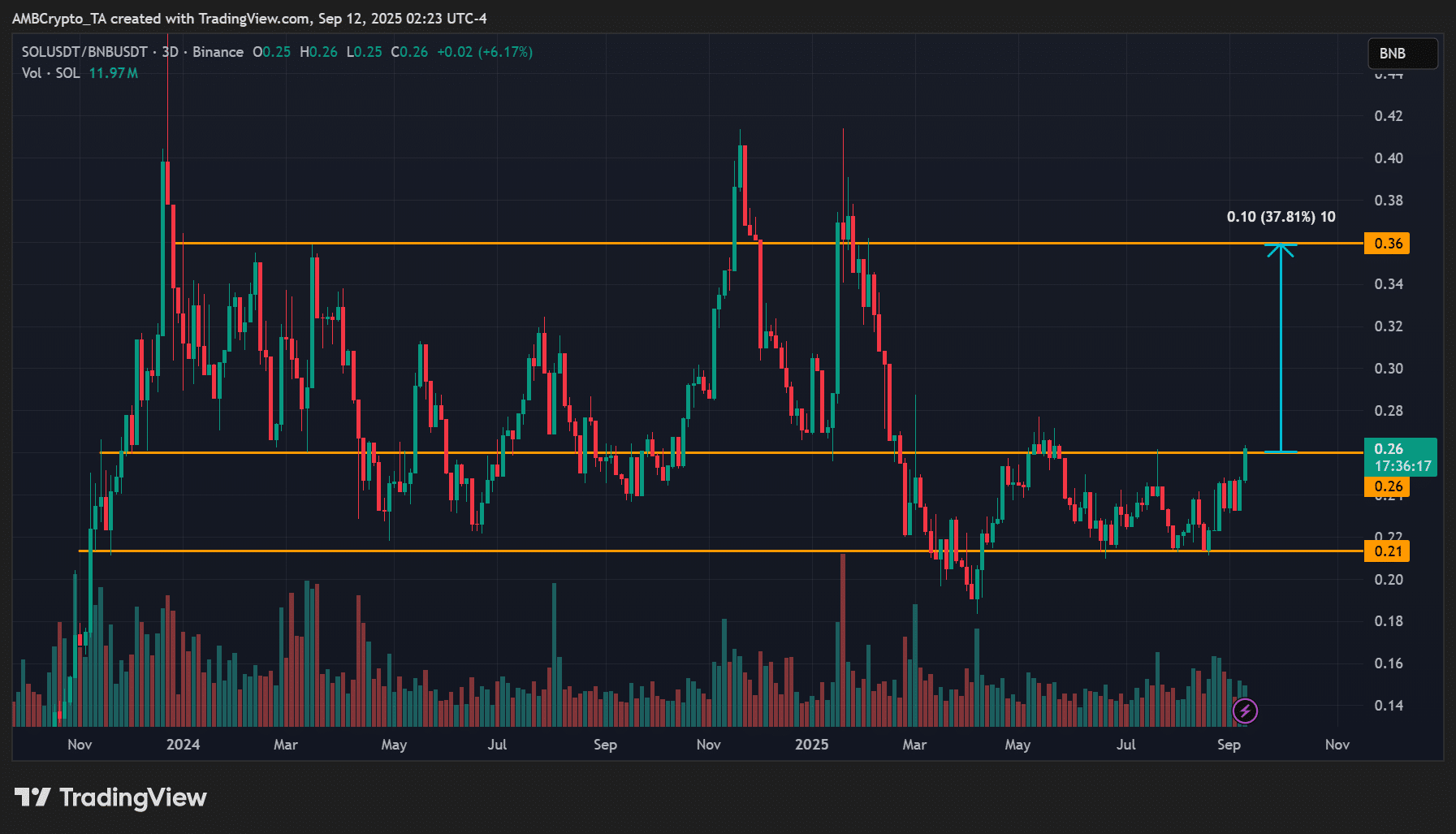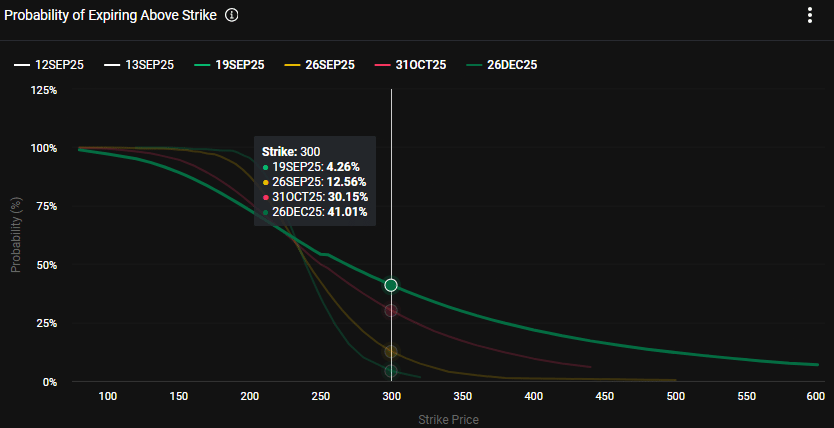Solana (SOL) briefly overtook Binance Coin (BNB) in market capitalization after institutional buys and a $1.65B SOL treasury initiative lifted SOL above $240; Galaxy Digital reportedly acquired roughly $486M in SOL, pushing SOL’s market cap past $129B and ahead of BNB by about $3B.
-
SOL outpaced BNB in market cap after large institutional treasury inflows.
-
SOL surged ~8% after the CPI print and briefly touched $240, with options pricing increasing for Q4 targets.
-
Galaxy Digital purchased ~$486M in SOL; combined treasury vehicles raised $1.65B to build SOL reserves.
Solana (SOL) tops BNB in market cap after $1.65B SOL treasury raise; read the latest price, on-chain buys, and market implications. Stay informed with COINOTAG updates.
What caused Solana (SOL) to overtake BNB in market cap?
Solana (SOL) overtook Binance Coin (BNB) after a confluence of institutional treasury activity and a sharp price rally. Large-scale buys tied to a $1.65 billion SOL treasury initiative and Galaxy Digital’s reported $486M acquisition pushed SOL’s market cap above $129 billion, edging past BNB by about $3 billion.
How significant were the on-chain buys and the $1.65B treasury raise?
The $1.65B capital raise — led by several institutional backers to build SOL treasury reserves — signaled heavy long-term demand. On-chain analytics reported roughly $486M of SOL moved into a single institutional wallet in 24 hours, removing meaningful sell-side liquidity and supporting higher prices.

Source: CoinMarketCap
How much SOL did Galaxy and others accumulate?
Analytics indicate Galaxy Digital and other firms participated in the treasury round and secondary market buys. Data attributed to on-chain trackers shows Galaxy acquired around $486 million in SOL within a 24-hour period, a sizable stake that reduces available circulating supply and supports higher prices.

Source: Lookonchain
What does SOL’s price action and options market imply?
SOL jumped nearly 8% after the latest CPI print and briefly reached $240, raising its market cap above $129B. Options markets priced a ~12% chance for $300 by September initially, but probability rose to 30–40% for $300–$350 in Q4. Odds for a $250 level were above 50% for September.

Source: SOL/BNB, TradingView
Why do treasury vehicles matter for SOL’s supply dynamics?
Treasury vehicles lock or hold tokens off-exchange, which can materially reduce circulating supply available to sellers. Industry analysts have noted that locked SOL via treasury firms will absorb sell pressure and potentially make supply-driven rallies more sustainable.

Source: Deribit
Frequently Asked Questions
How much did SOL’s market cap increase after the rally?
SOL’s market cap rose to over $129 billion after the rally, placing it roughly $3 billion ahead of BNB at press time.
Is Galaxy’s $486M purchase confirmed to be linked to the treasury firm?
On-chain traces show the $486M in SOL movements but it is not publicly confirmed whether those buys were directly for the newly formed treasury vehicle. Analysts treat the inflows as supportive regardless of exact allocation.
What are realistic near-term price targets for SOL?
Options markets and ratio-based analysis suggest targets between $250–$350 depending on continued institutional demand and macro conditions, with probabilities rising into Q4.
Key Takeaways
- Institutional demand: A $1.65B treasury raise and large on-chain buys helped SOL overtake BNB in market cap.
- Market signals: SOL rallied ~8% post-CPI and briefly touched $240; options odds for $300–$350 increased for Q4.
- Supply impact: Treasury vehicles and reported Galaxy purchases remove sell-side supply, supporting a higher price floor.
Conclusion
Solana’s recent outperformance versus BNB reflects a mix of institutional treasury commitments, large on-chain buys, and improving options-implied probabilities for higher Q4 targets. Solana (SOL) now sits as a top-five crypto by market cap, and market participants will watch treasury flows and macro policy as determinants of whether this trend persists. For continuous updates, COINOTAG will monitor on-chain activity and options markets.
